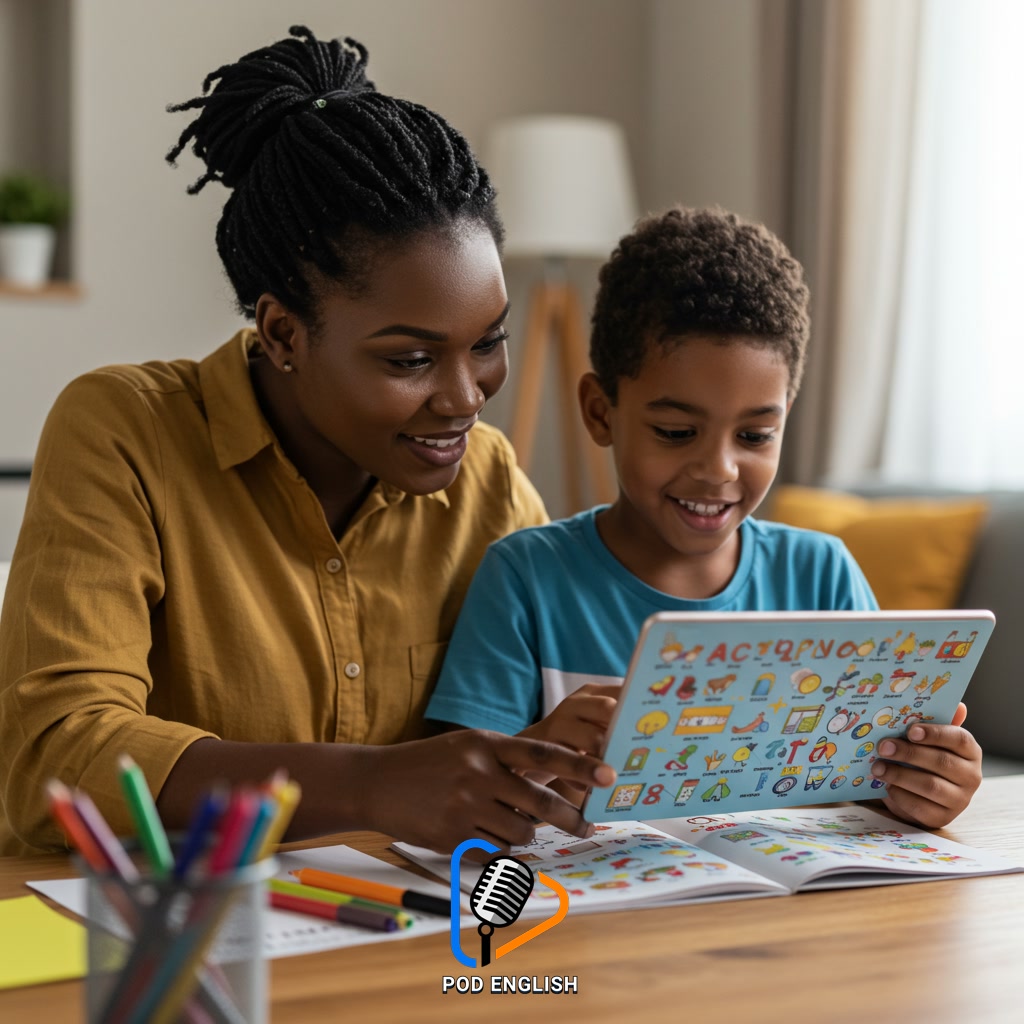Learn English
Parents Unlock English Learning Success: Essential Strategies

This content explores how parents can significantly contribute to their children’s success in learning English. It outlines essential strategies and practical approaches for creating a supportive environment at home. The focus is on providing parents with effective tools to facilitate their child’s learning English journey. By implementing these methods, parents can empower their children to achieve proficiency and confidence in English.
Table of Contents
- Section 1: Understanding the Parent’s Vital Role in English Learning
- Section 2: Creating a Supportive and Language-Rich Home Environment
- Section 3: Implementing Practical Strategies for Daily English Practice
- Section 4: Leveraging Resources and Technology for Effective Learning
- Section 5: Making English Learning Fun, Engaging, and Sustainable
- Section 6: Addressing Challenges and Tracking Progress
Section 1: Understanding the Parent’s Vital Role in English Learning
The journey of mastering English for children is significantly shaped by the environment and support they receive at home. While schools provide foundational instruction, parents play an absolutely vital role in reinforcing learning, building confidence, and fostering a positive attitude towards the language. Parents are not just facilitators; they are the primary motivators and create the consistent exposure necessary for language acquisition beyond the classroom. Their active involvement signals to the child that learning English is important and valued, making it a shared goal rather than just a school subject. Understanding this pivotal role is the first step in empowering parents to become effective partners in their child’s English learning success.

Section 2: Creating a Supportive and Language-Rich Home Environment
Creating a home environment that actively supports and encourages English learning is fundamental. This involves making English a natural and positive part of daily life, rather than just a school subject. Parents can achieve this by surrounding children with English resources: having English books visible and accessible, playing English songs or audio stories, and occasionally watching age-appropriate English cartoons or shows together. Simple things like labeling common household objects in English, using basic English phrases in conversation, or celebrating small progress can build familiarity and confidence. The key is to foster curiosity and a positive attitude towards the language, making learning feel like an engaging and enjoyable experience within the comfort and security of home.

Section 3: Implementing Practical Strategies for Daily English Practice
Building on the foundation of a supportive home environment, the next crucial step involves actively weaving English practice into the fabric of daily life. This approach emphasizes consistency through short, integrated activities rather than relying on lengthy, formal study sessions. Parents can implement practical strategies such as reading English storybooks together before bedtime, labeling common household items with English words, or incorporating English flashcards into playtime. Encouraging children to watch age-appropriate English cartoons or listen to simple English songs also provides valuable exposure. The key is to make these interactions enjoyable, natural, and a regular part of the child’s routine, transforming learning into a positive, everyday experience. By consistently applying these small, practical methods, parents can significantly boost their child’s familiarity and confidence with English.

Section 4: Leveraging Resources and Technology for Effective Learning
Building upon consistent daily English practice, parents can significantly amplify their child’s learning by effectively leveraging available resources and technology. The digital age offers a wealth of tools, including educational apps, interactive websites, online videos, digital books, and language learning platforms. These resources provide engaging and varied ways for children to encounter and practice English, offering everything from pronunciation guides and vocabulary games to listening comprehension exercises and virtual storybooks. Technology can make learning fun and accessible, catering to different learning styles. Parents play a key role in exploring these options, selecting age-appropriate and reputable tools, and guiding their child’s usage to ensure productive learning experiences. Integrating these resources strategically complements other learning methods and helps maintain motivation.

Section 5: Making English Learning Fun, Engaging, and Sustainable
Building on the foundation of consistent practice and leveraging resources, the next crucial step is ensuring English learning is genuinely fun, engaging, and therefore sustainable for your child. When learning feels like an exciting activity rather than a tedious task, children are naturally more motivated to participate and absorb information. Integrate playful methods such as singing catchy English songs, playing interactive language games – be it board games or digital apps – watching age-appropriate English videos, or even incorporating English into daily routines like cooking or describing objects. Tailoring these activities to your child’s unique interests, whether it’s superheroes, animals, or crafts, makes the experience highly relevant and captivating. This approach transforms learning into a positive, anticipated part of their day, fostering consistent long-term engagement and making their journey towards English proficiency a joyful and sustainable one.

Section 6: Addressing Challenges and Tracking Progress
Even with engaging methods, children will inevitably face hurdles in their English learning journey. It’s crucial for parents to recognize these challenges without pressure. Pay close attention to areas where your child struggles, whether it’s specific sounds, sentence structures, or remembering new words. Address these difficulties patiently, perhaps by breaking them down into smaller steps or trying different learning activities focused on that specific area. Simultaneously, establishing a simple way to track progress is vital. This doesn’t need to be formal; observing increased confidence, using new vocabulary naturally, or understanding more complex instructions are all signs of growth. Celebrating these small achievements reinforces effort and builds momentum, making the learning process feel rewarding and manageable for both of you.
![]()













